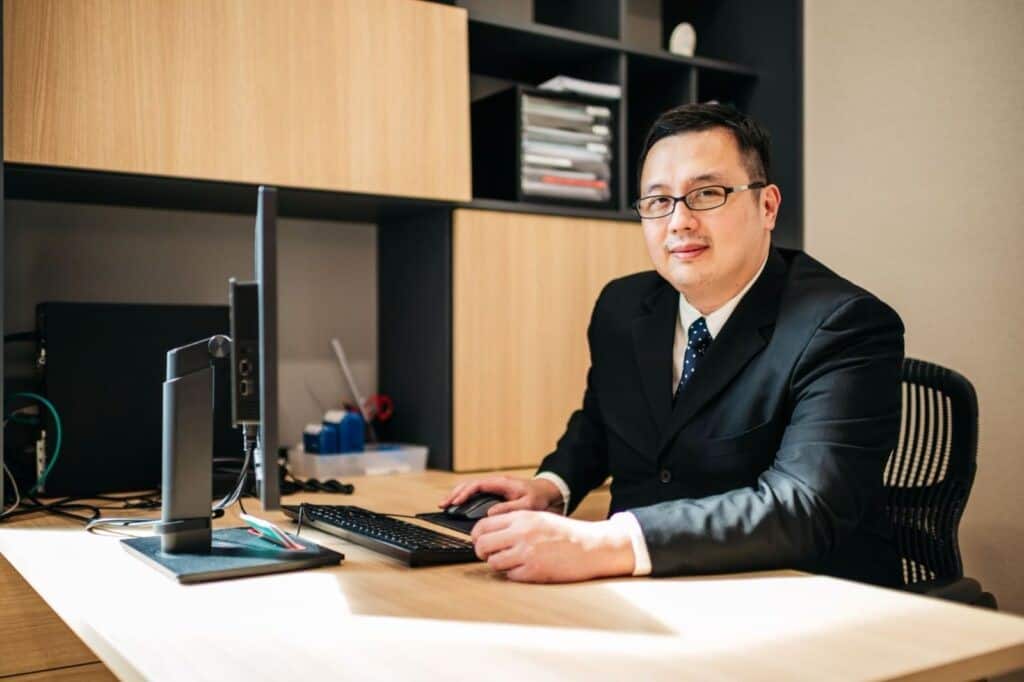Lower back pain is an issue which is the result of a complex set of factors like lifestyle, medical issues, and mechanical disturbances. It is one of the most common health issues among workers, especially those who perform manual labour and have to endure long durations of sitting and no physical activity. This can worsen the problem. Orthopaedic surgeons are a group of specialists who not only diagnose the problem but also give detailed solutions for lower back pain that is apparent in Singapore. But there are a number of treatment options that are accessible to deal with the various causes of chronic lower back pain.
Causes of Lower Back Pain – What You Need to Know
Back pain typically results from a combination of three causes:
The muscular back pain is a result of tiring the lower back muscles, which in turn, cause pain to be aching and cramping.
The tears in the intervertebral discs lead to the disc herniation and consequently the severe pain and the risk of disc protrusion increase.
Facet joint pain is a condition that develops in facet joints, which are located in the spine and can be affected by arthritis, therefore producing pain in the lower back up to the buttocks.
Musculoskeletal pain, especially back pain, being an elusive ailment to diagnose is a complex condition.
If you are experiencing lower back pain, a consultation with an orthopaedic surgeon that is well versed in diagnosis and treatments of such problems should be a priority. They are able to evaluate, interpret, and figure out the source of the problem.
(https://www.mkuh.nhs.uk/patient-information-leaflet/lower-back-pain-advice)
Procedures to Effectively Diagnose Lower Back and Buttock Pain
In lower back and buttock pain the diagnostic approach is comprehensive, which starts with a full medical interview with an orthopaedic surgeon to check symptoms and potential factors causing pain. This involves examining an overall health status, history of previous medical history, family history, and any pre-existing health disorders such as arthritis or diabetes which may affect decisions regarding the treatment. A comprehensive physical exam is considered necessary as it checks for elements like range of motion, edema and reflexes, and mobility to rule out or establish possible diagnoses. The structural abnormalities or misalignments of the affected area are mostly detected by the use of x-rays and MRI scans, which are helpful in evaluation of the condition which could also be its implications. Such diagnostic measures enable the surgeon to make an accurate diagnosis and to discuss properly in regard to the information obtained.
Lifestyle Changes for those with Lower Back and Buttock Pain
Maintain a Healthy Weight: Excess weight can cause a lot of stress to your lower back, thus maintaining your weight through diet and exercise is a good way to avoid this. Exercises that are performed on a daily basis, particularly those that strengthen the muscles of the core and back, contribute to alleviate and support the back pains.
Practice Good Posture: One of the most important things you can do is to notice when you are not sitting or standing straight and to make an effort to correct it.
Quit Smoking: Smoking might trigger narrowing of vessels that supply blood to the spine, which then can be a cause of the back pain. Giving up smoking can definitely help you in improving your blood flow and consequently your back health.
Get Quality Sleep: Having a good mattress and a good posture helps to keep the spine in good shape and relieves the lower back pain.
(https://www.freepik.com/free-photo/young-woman-practicing-yoga-home_7168000.htm)
Lifestyle modifications such as decreasing weight, exercising, changing posture, stopping smoking, and getting adequate sleep can help reduce lower back pain and improve spinal health, but they are only one component of a therapeutic strategy. Certain reasons for lower back pain necessitate specialized medical care. Thus, orthopaedic surgeons are trained to accurately assess your pain and devise a personalised treatment plan that may include lifestyle changes, physiotherapy, drugs, or surgery. Their experience guarantees that you receive the best and most suitable care for your illness, resulting in better outcomes and well-being.
Physiotherapy Solutions for Lower Back Aches & Pains
Dedicated physiotherapists strive to enhance your range of motion, physical function, and overall quality of life. Their personalised approach involves tailored exercises, hands-on therapy, and diverse techniques. They not only address current health issues but also prevent recurring injuries and disabilities. Through their varied skills, physical therapists not only treat health problems but also inspire patients to lead active, pain-free lives, ultimately boosting their holistic well-being.
Physiotherapy is a transformative approach to both acute and chronic back pain. For minor issues, physiotherapists craft personalised exercise plans, employ diverse techniques, and impart valuable knowledge on body mechanics to alleviate discomfort and prevent future challenges. Additionally, physiotherapy plays a pivotal role in post-surgical or intensive treatment recovery, aiding individuals in regaining strength, flexibility, and mobility post procedures like spine surgery. Whether addressing minor discomfort or aiding in recovery, physiotherapy is a non-invasive and integral component of holistic care, contributing to improved back health, pain reduction, and an overall enhancement of well-being.
Understanding Nonsteroidal Anti-inflammatory Drugs (NSAIDs) and Their Role in Alleviating Lower Back Pain
Common pain relievers like ibuprofen and naproxen can help with lower back pain, reducing inflammation and discomfort. They work by blocking prostaglandins, the culprits behind pain and swelling. While these medications offer temporary relief for lower back issues caused by strains or injuries, it’s crucial to incorporate them into a broader treatment plan for chronic pain. It’s advisable to consult with a healthcare professional to manage potential side effects and ensure a holistic approach to care.
(https://www.freepik.com/free-photo/side-view-woman-having-backache-while-working-from-home_11905060.htm)
Treatments for Lower Back and Buttock Pain
When it comes to treating back pain, orthopaedic surgeons tailor plans to your unique needs. They consider both surgical and non-surgical approaches, covering:
– Medications for relieving back, buttock, and leg pain.
– Practical advice on lifestyle changes to cope with back discomfort.
– Physiotherapy to strengthen your back and core muscles, enhancing function and reducing discomfort.
– Targeted pain procedures addressing the root causes of back pain.
– Surgical interventions to alleviate pinched nerves and stabilize deteriorated spines.
(https://www.freepik.com/free-photo/doctor-man-consulting-patient-while-filling-up-application-form-desk-hospital_5017999.htm)
The Importance of Consulting an Orthopaedic Surgeon
Orthopaedic surgeons play a vital role in keeping people healthy and active throughout their lives. Our musculoskeletal system, encompassing bones, joints, ligaments, tendons, muscles, and nerves, is a key player in maintaining mobility and a good quality of life. It’s worth noting that symptoms vary for everyone, and treatments differ based on individual health and lifestyle. The personalised care provided by orthopaedic surgeons emphasizes the crucial role they play in tailoring interventions to each patient’s unique needs, ultimately contributing to enhanced health and well-being.
Sports Injuries
Lower back strains are caused by sports injuries significantly more than any other factor, except lifting heavy objects. The injuries leading to these conditions are derived from basic types of activities. Reaching, pushing, pulling, holding, or manipulating an object can lead to back trauma. It is easy to understand how such an acute dynamic of activity can result in trauma. A growing body of medical research indicates that sports play a more definitive role in the pathogenesis of many low back conditions. Injuries in sports can be attributed to two factors: intensity and frequency. Intensity refers to the amount of trauma thought to be transmitted to the athlete who receives sprints, jumps, blows, etc. Frequency refers to continuous, repeated, and thus cumulative trauma on athletes at the same body site. Technique is also believed to play a critical role in injury onset, especially in low back activity, exercise, and protective practice. Technique is linked to all situations in which sports injuries can cause pain, great discomfort, stagnation, features of poor body posture, and harm.
Many sports have higher percentages of low back injuries subsequent to muscle strains, and in most sports, these injuries are caused by axial rotation in a stooped position. The body site for these injuries may occur at a number of locations ranging from L1-L2 to S1-S2. Hyperextension and forward-directed rotation can lead to injury pathology as well. Typical sports in which low back injuries are more prevalent than others include discus, football, gymnastics, hockey, weightlifting, and wrestling. Experts urge all coaches and potential athletes who engage in sports activities that produce rotational forces at the low back to begin with flexibility exercises only after 10 to 15 minutes of brisk walking or jogging. Before anaerobic training, they encourage seven or eight repetitions of warm-up, followed by 10 minutes of jogging. No anaerobic training is encouraged without proper conditioning and warm-up.
Improper Lifting Techniques
Improper lifting techniques are often blamed for straining the muscles in the lower back. There are some general biomechanical considerations when lifting heavy objects. Keeping the moving object close to the body will reduce leverage, keep the back straight, and use large muscles to do the work. Another good rule to follow is to keep the object directly in front of your body rather than off to the side. The hands and feet are involved less frequently in materials handling tasks than the back/hips or upper arms/legs. This is a general 2:1 ratio, although it may not apply to every employee. Safe lifting continues to be an ongoing discussion. Those trained in body mechanics and lifting the load correctly carried their bodies correctly only half as often as those not trained.
At work, lifting is an obvious way one could pull or strain a muscle. Some examples of lifting incidents at work include lifting a patient or resident, handling patients or residents in the shower or bathtub, reaching into bed to assist residents with repositioning or bed making, carrying heavy labor trays, garbage cans, or laundry baskets, and loading and unloading food for a kitchen or dining facility, to name a few. At home, someone might lift something beyond their safe weight limit or lift it incorrectly, leading to a back strain. People should use good body mechanics when lifting items to avoid injury. This is one approach to preventing back muscle strain, spasm, or rupture. In addition, many back muscles work best if the stomach muscles are in good shape. Larger muscles help smaller muscles. The abdominal muscles help supply support to the back muscles. When the stomach muscles are weak, the back muscles must work harder. With good back strength, the stress to the spine and trunk in lifting can be reduced in many cases. In addition to good lifting techniques, engaging in a routine back exercise program is also an effective approach for back pain prevention.
Preventive Strategies for Lower Back Muscle Tears and Strains
Unfortunately, muscle tears in the lower back can happen easily and may cause symptoms ranging from mild ache to moderate pain. Time and conservative therapies are usually the best treatments for back muscle tears. Preventive strategies to minimize the risk of muscle tears or back strains may include a multi-faceted approach that includes regular exercise to maintain strength and flexibility, using the proper technique when lifting or bending, and practicing body mechanics or body awareness with everyday activities. Focus the most on tightening the muscles of the back if you have a tear in your back. Maintaining strength in all of your core body muscles while stretching helps prevent back muscle tears or strains. When this muscle programming is incorporated, it should be part of the warm-up. Before doing any activities that use your muscles, people must move gently in the direction they want the muscle actually to go. Someone who wants to reach for something on the top shelf should stretch their back gently by bending their body backward. Ergonomics in the workplace and at home may promote better spinal health and minimize the likelihood of tearing back muscles. Workers must be trained to recognize personal risk factors and the signs of fatigue so that they can avoid injuries to muscles in their lower back. Being physically active and making good decisions are other ways to avoid muscle tears or strains in your back. Being physically fit may help stave off back problems. For example, if you have strong muscles, you may be able to carry a heavy grocery bag without causing a muscle tear. Being mentally aware of the danger of a muscle tear and educated concerning it can also help decrease the risk of muscles tearing.
FAQs:
How can an orthopaedic surgeon or orthopaedic specialist help me? Consulting an orthopaedic surgeon is essential for addressing musculoskeletal issues across all age groups. The musculoskeletal system is vital for mobility and well-being, and individual symptoms and treatment approaches vary based on unique conditions and lifestyles, emphasizing the need for personalized care.
Is chiropractic treatment the only available option for my back pain? Before considering chiropractic adjustments for lower back and buttock pain, consulting an orthopedic surgeon is crucial. Surgeons can accurately diagnose the issue, ensure safety, and prevent unnecessary treatments, resulting in appropriate, safe, and effective care.
What are the treatment options for lower back and buttock pain? Treatment for lower back and buttock pain, provided by orthopaedic surgeons, includes both surgical and non-surgical options. These treatments encompass medication, lifestyle guidance, physiotherapy, pain procedures, and surgical interventions, tailored to the patient’s specific condition.
What are some lifestyle changes that I can implement to combat lower back and buttock pain? Lifestyle changes for those with lower back and buttock pain involve maintaining a healthy weight, regular exercise, practicing good posture, quitting smoking, and ensuring quality sleep to support spinal health and alleviate discomfort.
What are the causes of lower back pain? Lower back pain can result from muscular, discal, or facet joint issues. It’s a complex condition, and consulting an orthopaedic surgeon is crucial for accurate diagnosis and effective treatment, improving the quality of life for patients with musculoskeletal pain.
References:
- https://www.medicalnewstoday.com/articles/160645
- https://www.theorthopaedicandpainpractice.com/service/lower-back-buttock-pain/
- https://www.theorthopaedicandpainpractice.com/back-pain-should-i-be-concerned-about-back-pain/
Dr Yong Ren’s Profile
Dr Yong Ren graduated from the National University of Singapore’s Medical faculty and embarked on his orthopaedic career soon after. Upon completion of his training locally, he served briefly as an orthopaedic trauma surgeon in Khoo Teck Puat hospital before embarking on sub-specialty training in Switzerland at the famed Inselspital in Bern.
He underwent sub-specialty training in pelvic and spinal surgery, and upon his return to Singapore served as head of the orthopaedic trauma team till 2019. He continues to serve as Visiting Consultant to Khoo Teck Puat Hospital.
Well versed in a variety of orthopaedic surgeries, he also served as a member of the country council for the local branch of the Arbeitsgemeinschaft für Osteosynthesefragen (Trauma) in Singapore. He was also involved in the training of many of the young doctors in Singapore and was appointed as an Assistant Professor by the Yong Loo Lin School of Medicine. Prior to his entry into the private sector, he also served as core faculty for orthopaedic resident training by the National Healthcare Group.
Dr Yong Ren brings to the table his years of experience as a teacher and trainer in orthopaedic surgery. With his expertise in minimally invasive fracture surgery, pelvic reconstructive surgery, hip and knee surgery as well as spinal surgery, he is uniquely equipped with the tools and expertise necessary to help you on your road to recovery.








